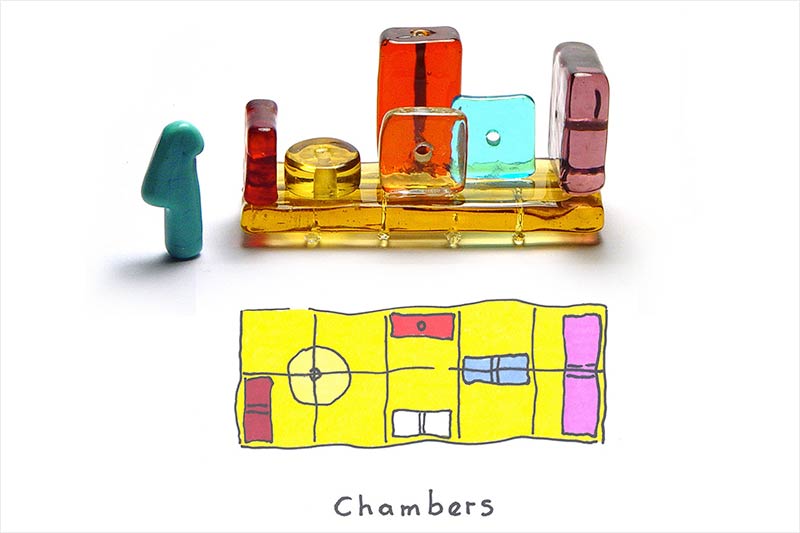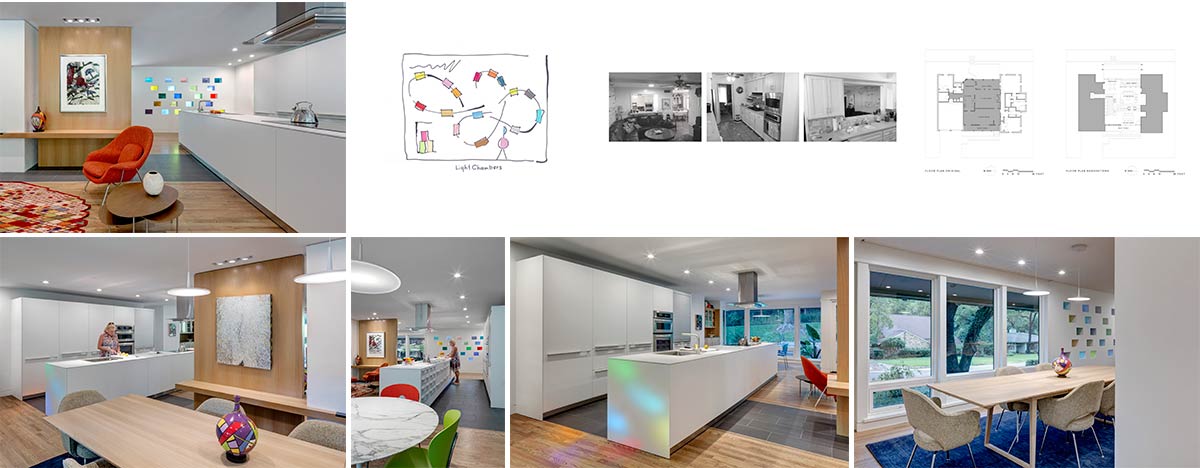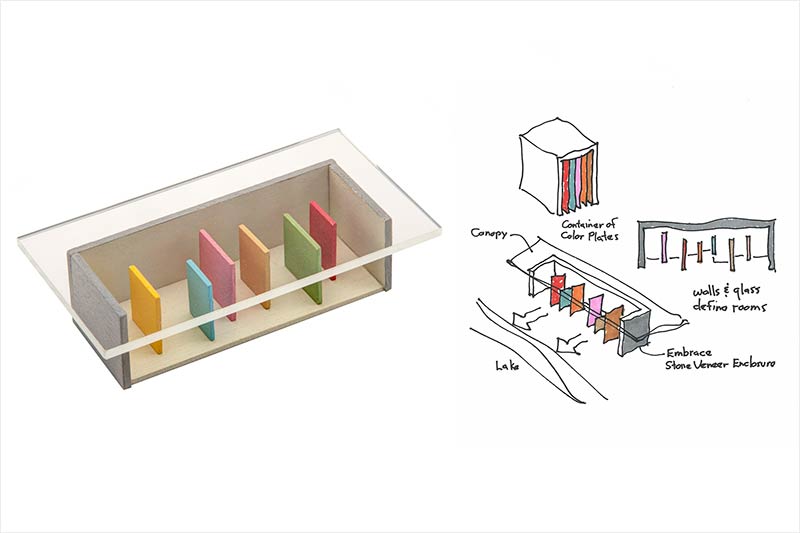Written by: Norman Ward, FAIA
Moving from the Bluestem’s hilltop into the city. This aerial shows a “green zone” where two 1930 neighborhoods merged. As you can see, this block is wider than the other blocks; leaving a slot of land, three blocks long. The Moretti’s purchased a 60’ x 300’ lot within this green zone. Two courtyards are inserted within the house. They serve as “light wells”. The Studio is placed within the garden and is connected to the main house with a “glass bridge”. The long porch faces south.







